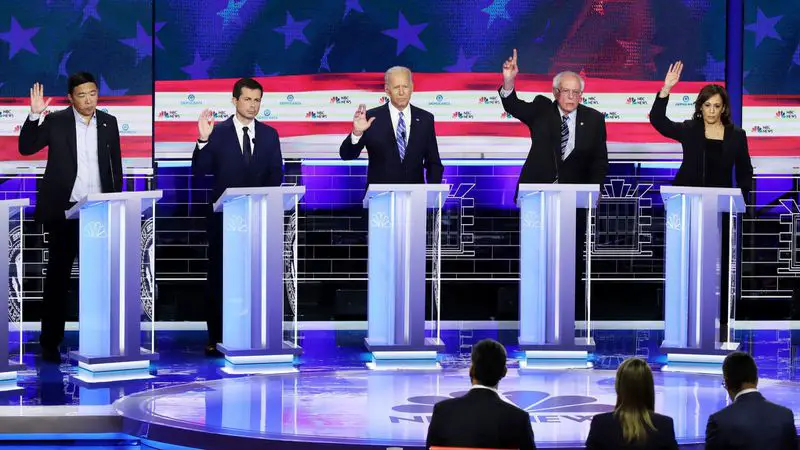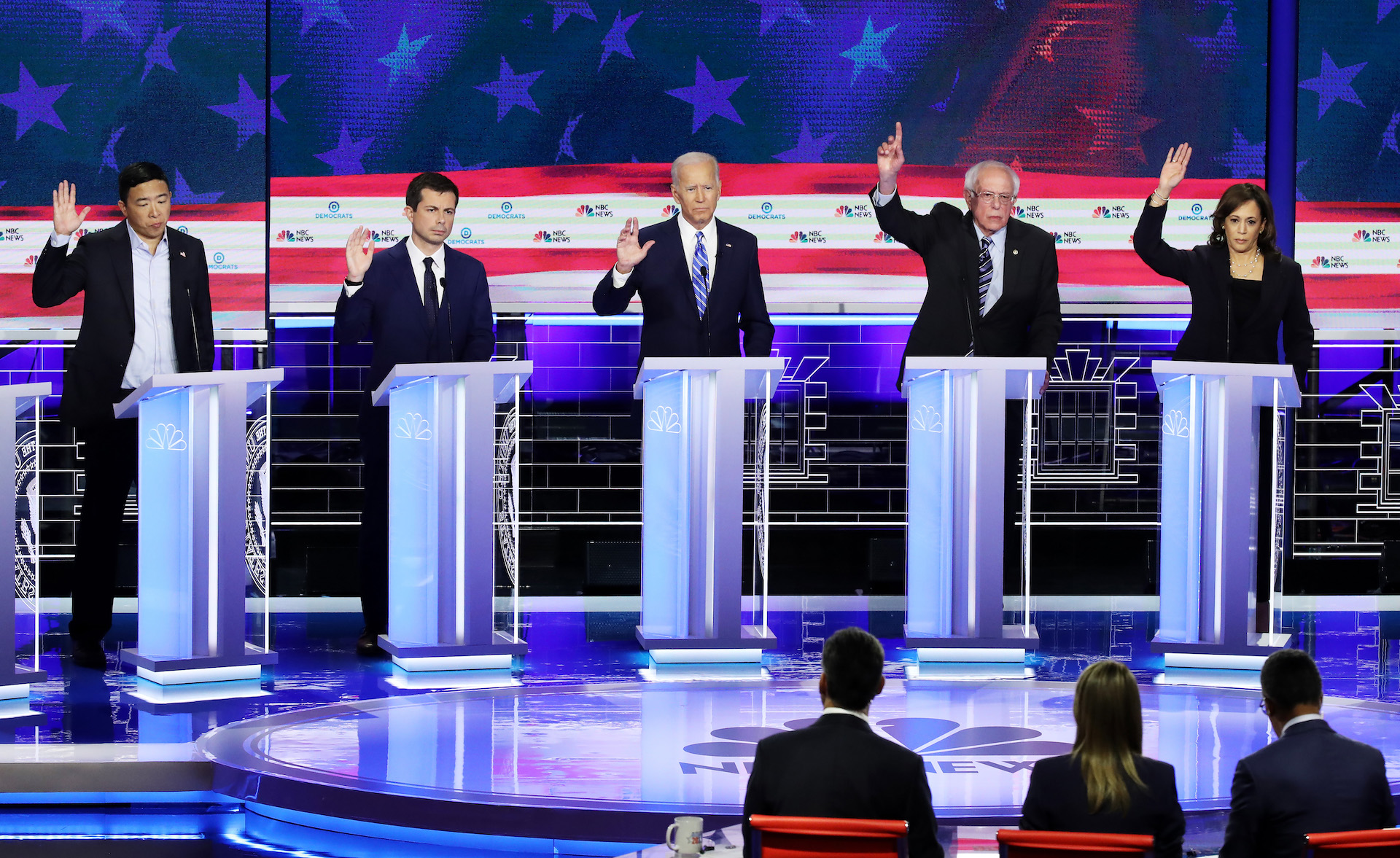For the upcoming Democratic primary debate hosted by CNN on July 30 and 31, the network has set forth a new set of rules for the question format and the time allotted to each candidate. Perhaps as a request from candidates, or the Democratic National Committee (DNC), CNN has said its moderators will not be asking any “show of hands” questions or ask for one-word answers down the line as seen during the first debate hosted by NBC.
In an attempt to clamp down on candidates interrupting and talking over their time, CNN will institute the following rules which were disclosed to campaign representatives on Tuesday:
- Colored lights will be used to help the candidates manage their remaining response times: 15 seconds = yellow; 5 seconds = flashing red; no time remaining = solid red.
- A candidate attacked by name by another candidate will be given 30 seconds to respond.
- There will be no show of hands or one-word, down-the-line questions.
- A candidate who consistently interrupts will have his or her time reduced.
- Questions posed by the moderators will appear on the bottom of the screen for television viewers.
The first two items on the list are pretty standard fare for debate rules. Candidates often need some visual guide to tell them how much time is remaining since they’re typically used to talking without interruption for as long as they want on the campaign trail.
Giving candidates 30 seconds to respond to attacks is another rule seen practiced on most presidential debate stages. Enforcing the rule can get difficult sometimes if attacks go back and forth and two or three candidates end up eating 10 minutes of time as they continue attacking each other.
The last two items are also improvements intended at making the process more orderly for viewers. Candidates may be less inclined to interrupt or cut off another candidate if they will end up losing time down the road.
Furthermore, candidates often skip over the question posed by moderators in favor of answering questions that weren’t asked. Printing the questions on screen is another helpful item for viewers to know what the candidate is supposed to be addressing.
Show of hands questions or one-word answers
Perhaps the most noteworthy change is seen in item 3 which bars moderators from asking “show of hands” or “one-word answer” questions. It’s possible that this tule change stems from the incident during the first debate where every major candidate raised their hand to indicate support for providing publicly funded health care to people in the country illegally.

Just a day ago, the Los Angeles Times ran a story asking whether this “hand-raise” question helped President Trump in his push for re-election in 2020:
With a sharp left turn, Democrats are risking a backlash on an issue of raw emotional and political sensitivity: providing government healthcare to millions of people in the country illegally.
Ten of the party’s nearly two dozen presidential candidates stood on a debate stage last month and, without hesitation, raised their hands pledging themselves to the policy shift. Most others in the field have also expressed their support.
…
The promise was consistent with the prevailing sentiment of the party’s liberal base. But some worry the candidates have staked themselves too far left, boosting President Trump’s reelection prospects.
“There’s the question of how you provide healthcare for citizens of the United States and how you provide healthcare for residents of the United States,” said Peter D. Hart, a longtime Democratic pollster, who sees an important distinction between the two.
“To make them equivalent is probably a position that is not going to sit well with the mainstream of the electorate,” Hart said.
Beyond the political optics of the “hand-raise” question during the first debate on health care, these kinds of short-answer exercises aren’t very helpful for viewers. It’s not clear whether the change is coming directly from CNN, or from requests made by candidates to avoid these “gotcha” scenarios.
Any questions surrounding the U.S. health care system is one which requires more than a hand raise or a one-word answer. The topic is complex, and the nuances matter, especially for candidates who offer plans that differ.
This is not the first time that a “show of hands” question in a debate has been controversial. All the way back to the 2008 Republican primary, during a debate in Iowa sponsored by Iowa Public Television, there was pushback from one candidate in particular over a “show of hands” question related to climate change:
Former Senator Fred Thompson would go on shortly to bow out of the Republican primary, but this exchange brought to light how candidates can push back against moderators on these kinds of questions. Perhaps more noteworthy were the Republican candidates on stage who started to put their hand up before Thompson shut the question down.
Imagine the first Democratic debate last month if one candidate pushed back against the “show of hands” question on health care and said they wanted time to explain their answer. The incident might have ended differently.
Donate Now to Support Election Central
- Help defend independent journalism
- Directly support this website and our efforts
